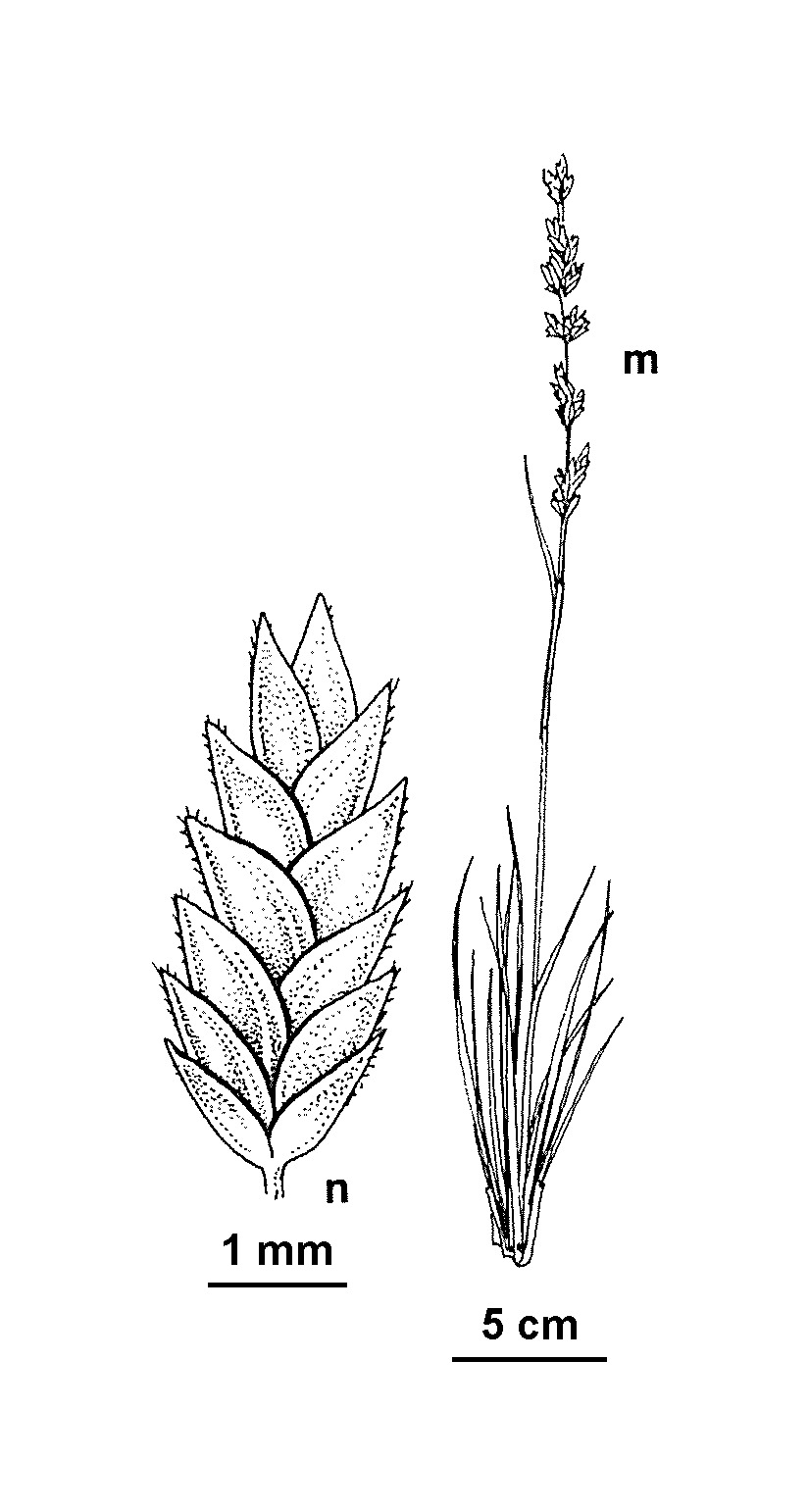Eragrostis elongata
(Willd.) J.Jacq. Close-headed Love-grassTufted perennial, culms sometimes branched, erect, to 80 cm high. Leaves glabrous; blade closely inrolled to flat, to 15 cm long and 3 mm wide. Inflorescence a slender, spike-like panicle, often interrupted, 3–25 cm long, lower branches solitary or rarely opposite, remaining appressed to culm, bearing spikelets throughout their length. Spikelets subsessile, 6–24-flowered, mostly 2.5–8 mm long, green or purplish, often somewhat glaucous; glumes acute to acuminate, 0.8–1.8 mm long, subequal; lemma c. 1.5 mm long, acute; palea slightly shorter than lemma; anthers c. 0.2 mm long; grain more or less ovoid, 0.5 mm long. Flowers Dec.–Mar.
LoM, MuM, Wim, GleP, VVP, VRiv, MSB, RobP, MuF, GipP, Gold, CVU, GGr, DunT, NIS, EGL, HSF. Also WA, NT, SA, Qld, NSW. Common in the north-west and occasional in drier grasslands to the south as far as the Grampians and eastward along the Murray floodplain to near Albury. Scattered in drier grassland and woodland communities in the south, eastward to Lakes Entrance area. Largely replacing Eragrostis brownii through northern districts and likely to be confused with young plants of that species, but distinguished by its narrow inflorescence, the florets with only 2 anthers (cf. 3 for E. brownii) and smaller grain.
Walsh, N.G. (1994). Poaceae. In: Walsh, N.G.; Entwisle, T.J., Flora of Victoria Vol. 2, Ferns and Allied Plants, Conifers and Monocotyledons, pp. 356–627. Inkata Press, Melbourne.
 Spinning
Spinning



